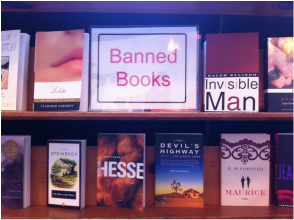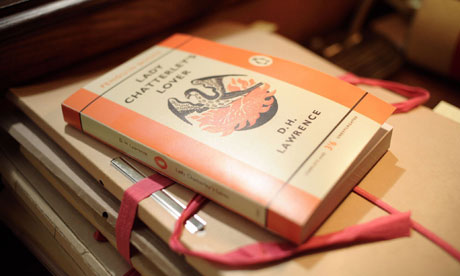
Obscenity, Censorship and Modernity: Do I agree with Deana Heath's View of Censorship?
In ‘Obscenity, Censorship and Modernity’ Deana Heath attempts to reclaim censorship from an oppressive and disembodied process, and present it rather as a sum of the circumstances surrounding cultural production and consumption. In her opinion, ‘to make censorship the provenance of puritanical prudes is to mitigate the nature, meaning and effects of censorship’ (509). Heath’s argument that censorship cannot be reduced to prohibition, to what Foucault terms the ‘repressive hypothesis’, is a valid one as the range of titles and subjects which have been censored have altered over time, indicating it is the ‘particular historical circumstance that render it problematic to throw them all together to form a coherent history of censorship’ (509). She, using the theories of Foucault, takes issue with the commonly held impression that humanity has moved in linear progress throughout history, emerging from the dark ages into one of enlightenment and freedom in a battle against the oppression of ignorant censors.
Litigation such as the Obscene Publications Act of 1857 is seen contextually, as a precaution by the state facing the boom in both working class population and the mass literacy which followed Forster’s Education Act. Foucault argues that the discursive explosion about sex in Western culture had, by the 18th Century, led the authorities to need to monitor sexual behaviour on grounds of social and political control. This was influenced by a wide range of factors, including birth rates and urbanisation amongst many others. As a result of such limitations, ‘instead of one discourse about sex however, what...emerged were multiple discourses, both ‘institutional’ and social,’ predicated on who was denied and who was allowed access to certain information. For Foucault ‘what was involved [in the regulation of sexuality] was a regulated and polymorphous incitement to discourse’ (Foucault 1990: 34, Heath 510) In this sense censorship is presented as a constructive and necessary factor in the formation of society and culture. While this is a dangerous claim, there is some logic; cultural growth comes from discussion and debate, and while censorship can be seen as preventing this, it can in effect function as the necessary 'other' for new movements to react and push against, as often the harder something is oppressed the more pressure and support builds behind it.
In ‘Obscenity, Censorship and Modernity’ Deana Heath attempts to reclaim censorship from an oppressive and disembodied process, and present it rather as a sum of the circumstances surrounding cultural production and consumption. In her opinion, ‘to make censorship the provenance of puritanical prudes is to mitigate the nature, meaning and effects of censorship’ (509). Heath’s argument that censorship cannot be reduced to prohibition, to what Foucault terms the ‘repressive hypothesis’, is a valid one as the range of titles and subjects which have been censored have altered over time, indicating it is the ‘particular historical circumstance that render it problematic to throw them all together to form a coherent history of censorship’ (509). She, using the theories of Foucault, takes issue with the commonly held impression that humanity has moved in linear progress throughout history, emerging from the dark ages into one of enlightenment and freedom in a battle against the oppression of ignorant censors.
Litigation such as the Obscene Publications Act of 1857 is seen contextually, as a precaution by the state facing the boom in both working class population and the mass literacy which followed Forster’s Education Act. Foucault argues that the discursive explosion about sex in Western culture had, by the 18th Century, led the authorities to need to monitor sexual behaviour on grounds of social and political control. This was influenced by a wide range of factors, including birth rates and urbanisation amongst many others. As a result of such limitations, ‘instead of one discourse about sex however, what...emerged were multiple discourses, both ‘institutional’ and social,’ predicated on who was denied and who was allowed access to certain information. For Foucault ‘what was involved [in the regulation of sexuality] was a regulated and polymorphous incitement to discourse’ (Foucault 1990: 34, Heath 510) In this sense censorship is presented as a constructive and necessary factor in the formation of society and culture. While this is a dangerous claim, there is some logic; cultural growth comes from discussion and debate, and while censorship can be seen as preventing this, it can in effect function as the necessary 'other' for new movements to react and push against, as often the harder something is oppressed the more pressure and support builds behind it.

It is also not simply the degree and focus of censorship which shifts, but also its means and motivations. For Heath ‘terms like obscenity and indecency are socially determined that, as far as those responsible for regulating them are concerned, change according to who is reading or viewing the work in question’ (510) Power to pervert or corrupt is therefore dependent on who is reading it, as much as the material itself; not the content, but how they will, or could, be used. This is reflected in the wording of the Obscene Publications Act 1959:
‘Obscenity does not mean shocking or disgusting but ‘if its effect…is, taken as a whole, such as to tend to deprave and corrupt persons who are likely, in all circumstances, to read see or hear [it]’’
Jones and Benson, Publishing Law 2011: 196
This notion of variable obscenity or obscenity as a relative concept inevitably invokes a hierarchy of those who can handle such material versus those who cannot, namely ‘those deemed incapable of self-control, such as children, women, the working classes and… Britain’s colonial subjects’ (Heath 511). Bourdieu identified that the way in which a person responds to a cultural artefact is determined by the 'cultural codes' which they are privilege to, informing the type of pleasure taken from it, such as titillation or intellectual enrichment. Price is a key determiner in the discussion over banned books, and the assumption here is that economical capital is linked to cultural capital; the wealthy and therefore educated, who are privileged to the necessary culture codes can understand and consume art which might be misconstrued as pornographic by the poorer, and consequently less intelligent, masses.
Censorship is therefore the norm rather than the exception, embedded into the structure of the field maintaining the limits that access to technology of the printed word had broken down. Soft forms of censorship are indistinguishable from hard, and can be visible and invisible, institutional and cultural. As ‘ideas of the blasphemous or obscene were disseminated and transformed to become part of different regulatory projects’ (Heath 512) they become internalised into the social fabric and collective consciousness.
Interested? Read More:
Deana Heath, 'Obscenity, Censorship and Modernity' in A Companion to the History of the Book, ed. Simon Eliot and Jonathan Rose. Oxford: Blackwell Publishing, 2007. pp. 508-519
Jane Potter, 'For Country, Conscience and Commerce: Publishers and Publishing, 1914-18' in Publishing in the First World War: Essays in Book History. Basingstoke: Palgrave Macmillan, 2007. pp. 11-26
Frederick Schauer, 'The Ontology of Censorship', in Censorship and Silencing: Practices of Cultural Regulation. Los Angeles: Getty Research Institute for the History of Art and the Humanities. pp. 147-168
‘Obscenity does not mean shocking or disgusting but ‘if its effect…is, taken as a whole, such as to tend to deprave and corrupt persons who are likely, in all circumstances, to read see or hear [it]’’
Jones and Benson, Publishing Law 2011: 196
This notion of variable obscenity or obscenity as a relative concept inevitably invokes a hierarchy of those who can handle such material versus those who cannot, namely ‘those deemed incapable of self-control, such as children, women, the working classes and… Britain’s colonial subjects’ (Heath 511). Bourdieu identified that the way in which a person responds to a cultural artefact is determined by the 'cultural codes' which they are privilege to, informing the type of pleasure taken from it, such as titillation or intellectual enrichment. Price is a key determiner in the discussion over banned books, and the assumption here is that economical capital is linked to cultural capital; the wealthy and therefore educated, who are privileged to the necessary culture codes can understand and consume art which might be misconstrued as pornographic by the poorer, and consequently less intelligent, masses.
Censorship is therefore the norm rather than the exception, embedded into the structure of the field maintaining the limits that access to technology of the printed word had broken down. Soft forms of censorship are indistinguishable from hard, and can be visible and invisible, institutional and cultural. As ‘ideas of the blasphemous or obscene were disseminated and transformed to become part of different regulatory projects’ (Heath 512) they become internalised into the social fabric and collective consciousness.
Interested? Read More:
Deana Heath, 'Obscenity, Censorship and Modernity' in A Companion to the History of the Book, ed. Simon Eliot and Jonathan Rose. Oxford: Blackwell Publishing, 2007. pp. 508-519
Jane Potter, 'For Country, Conscience and Commerce: Publishers and Publishing, 1914-18' in Publishing in the First World War: Essays in Book History. Basingstoke: Palgrave Macmillan, 2007. pp. 11-26
Frederick Schauer, 'The Ontology of Censorship', in Censorship and Silencing: Practices of Cultural Regulation. Los Angeles: Getty Research Institute for the History of Art and the Humanities. pp. 147-168

 RSS Feed
RSS Feed